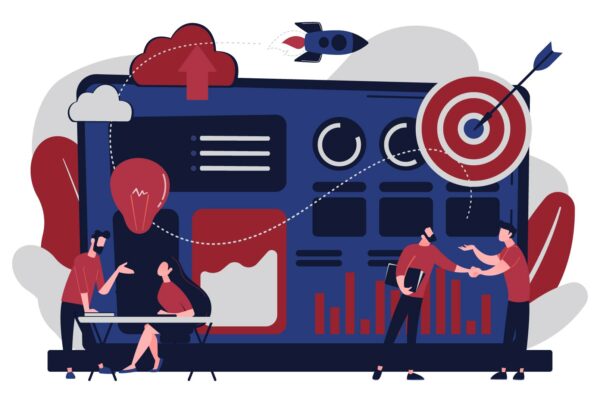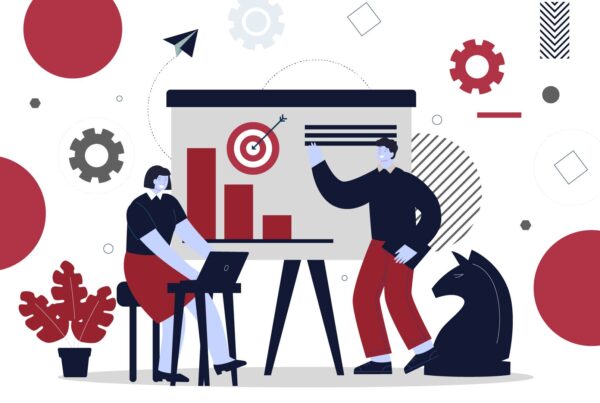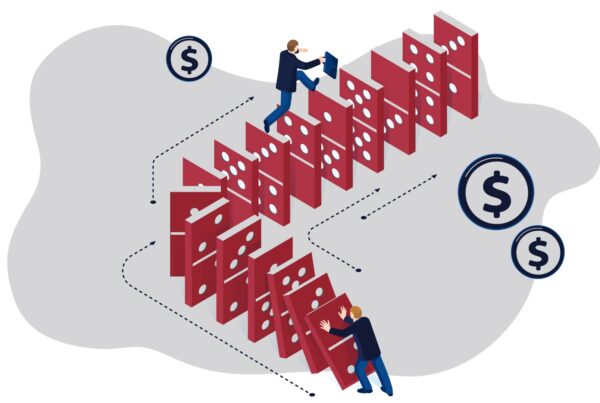While it’s relatively straightforward to measure the overall impact of your marketing efforts, it’s decidedly trickier to determine which marketing channel or touchpoint should get the credit for a new sale. Too few middle-marketing companies do this effectively, leading to sizable marketing waste.
Enter Attribution Modeling— a powerful tool that reveals the intricate matrix of customer interactions with your brand as well as which of those interactions is actually driving prospective customer behavior.
Attribution modeling is the process of assigning credit to different marketing touchpoints that influence the customer journey toward conversion. Simply put, it helps businesses understand which marketing channels, campaigns, or interactions play a role in driving a customer to make a purchase or take a desired action and to what degree. This is especially important at a time when customers engage with a brand through multiple touchpoints—eight on average—before deciding to purchase.
Imagine a B2B company that runs digital advertising, social media campaigns, email marketing, and hosts webinars. A potential customer might first come across the company’s ad on a search engine, then visit its website. They may then subscribe to its newsletter after clicking on a social media post. And then, after attending a webinar, they decide to make a purchase. Attribution modeling helps decode this complex journey and answer critical questions such as:
- Which marketing channel had the most significant impact on the final decision?
- How do different touchpoints contribute to revenue generation?
- How can marketing budgets be optimized based on the most effective channels?
- What kind of impact would reduction of our investment in any one touchpoint have on our conversion rates?
Why Attribution Modeling Matters
Attribution modeling is not just a trendy concept; it is a fundamental aspect of modern marketing strategy. Here’s why it matters, particularly for middle-market CEOs and marketing leaders.
Data-driven decision making: Attribution modeling provides data-backed insights, allowing leaders to make informed decisions on where to allocate precious marketing resources for the best ROI based on the marketing touchpoints truly responsible for converting a prospect to a customer rather than only the last touchpoint prior to a sale, which is all too common.
Resource optimization: By identifying high-impact marketing channels, businesses can allocate their budgets more effectively and avoid wasteful spending on less productive channels.
Customer journey understanding: Attribution modeling helps companies better understand the customer journey, enabling them to tailor marketing messaging to specific touchpoints based on what information customers need at that point in their buying journey.
Improved ROI: When leaders have a clear view of what’s driving actual conversions, they can fine- tune their strategies to maximize ROI, which is especially crucial for companies with limited resources.
Attribution modeling is like golfing with a caddy who knows every inch of the course. You might have a good swing, but without your caddy’s insights on where to aim and which club to use, you’re just as likely to end up in the sand trap as on the green. Attribution modeling tells you where your marketing strokes are landing, turning guesswork into a game of skill. It’s the difference between swinging blindly and aiming for a hole-in-one with every shot.
With a clear view of what’s driving actual conversions, you can fine-tune your strategies to maximize ROI, which is especially crucial for companies with limited resources.
By Lori Turner-Wilson, RedRover CEO/Founder, Internationally Best-Selling Author of The B2B Marketing RevolutionTM: A Battle Plan for Guaranteed Outcomes
Taking Action
Embracing the power of attribution modelling and stop accepting bad data is one of hundreds of best practices found in The B2B Marketing RevolutionTM: A Battle Plan for Guaranteed Outcomes — the playbook that middle-market B2B CEOs and marketing leaders lean on to scale. Backed by a groundbreaking research study, this book offers time-tested best practices, indispensable KPIs for benchmarking, insights on where your dollars are best spent, and, above all, the proven 12 BattlesTM Framework for generating guaranteed marketing outcomes. The B2B Marketing RevolutionTM is a battle-hardened approach to becoming an outcomes-first leader who’s ready to shake up the status quo, invest in high-payoff market research and optimization, and — yes — even torch what’s not serving your endgame.







